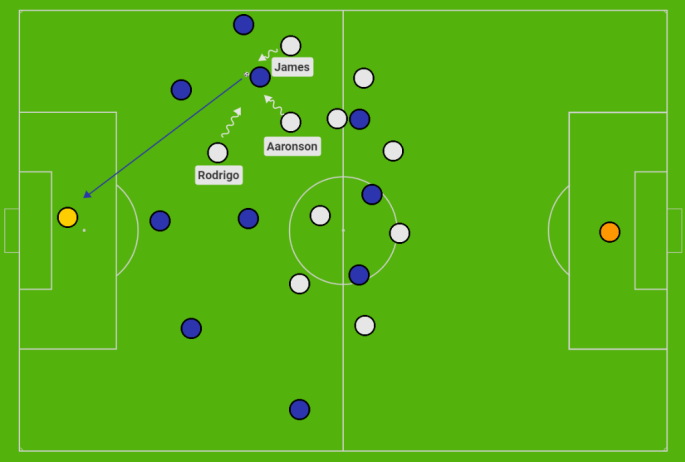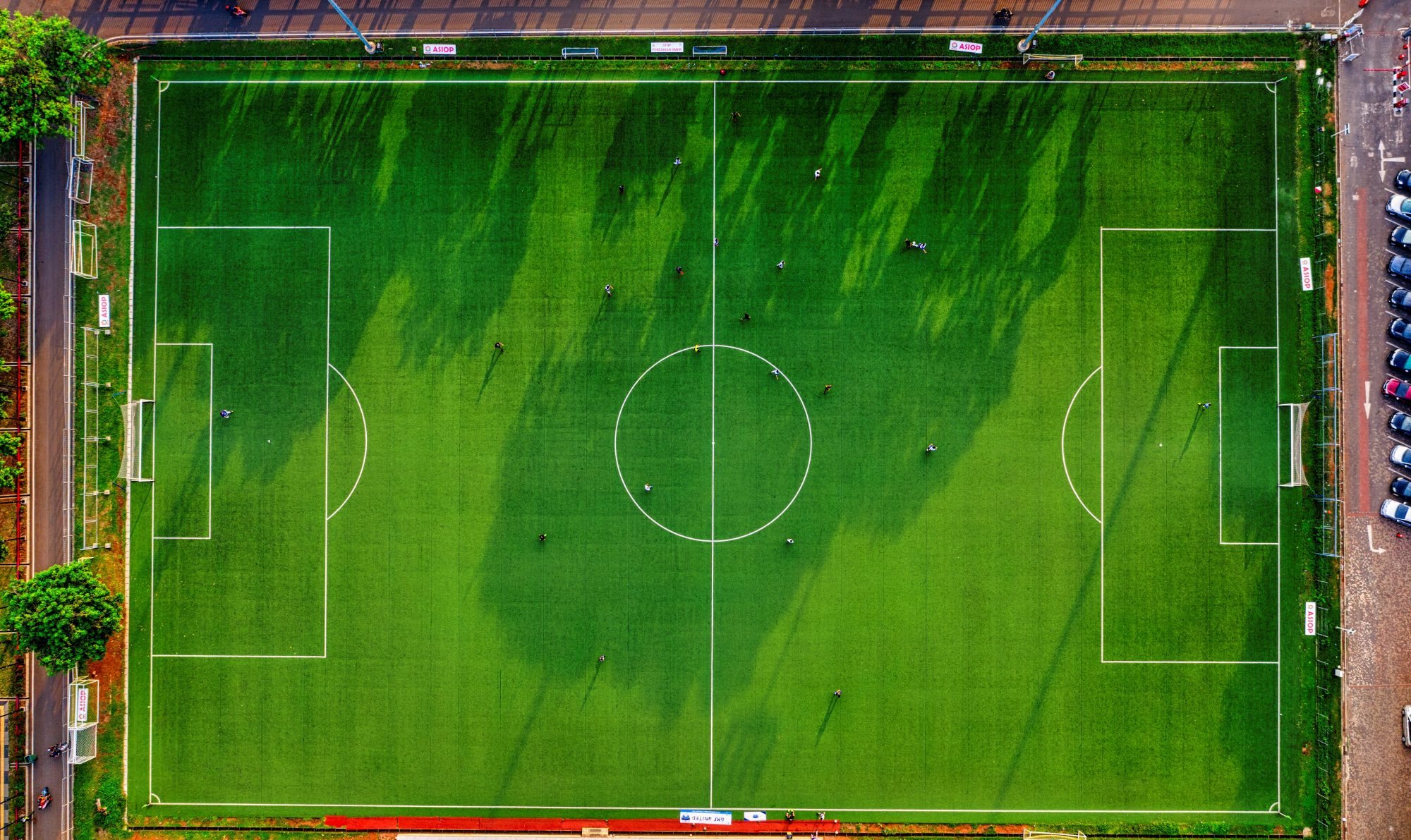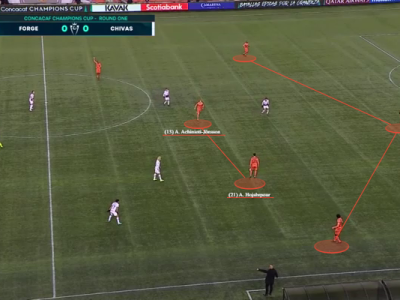
Pressing has been one of the most commonly discussed topics in the past decade or so of the detailed scrutinization of football. Ideas around gegenpressing, and the high-control philosophies of managers like Guardiola and Klopp allowed pressing to come to prominence for all to see, and induced a belief that pressing must be the only proper way to defend.

When you compare most teams to the philosophies of Guardiola and Klopp, it’s easy to see why so many get confused in making proclamations about teams as either being high pressing teams or not. In reality, just about every footballing team on the planet produces moments of pressing, even if some do more than others.
Embed from Getty ImagesThis article explores the topic of pressing in greater detail, including ideas around when to press, as opposed to when to hold position. Like anything in football, there is never one correct answer to any problem. But we hope to present key topics of discussion that could allow footballing teams and players to gain a greater understanding of how to achieve success within this common debate.
SHOULD I STAY OR SHOULD I GO?
Growing up as a kid, my mom absolutely loved to jam out to this song. The central premise can be taken so incredibly literally in a footballing sense, that I’m surprised others have not referenced it throughout time. This is the question that players must be constantly asking themselves when defending, and the answer can be guided by a series of factors ranging from their team’s game model, to their own individual mentality.

Regardless of the manager’s ideals, nine times out of ten, pressing must be a collective endeavour guided by the entire team, rather than just one individual. If it’s just one individual and they go and press on their own, space will immediately open in the gap that they vacate. While they can still be successful in winning the ball, the risk may not always be worth the reward in what singular pressing can expose.
Embed from Getty ImagesBut the same can be said about collective pressing. As opposed to holding shape, shuffling with the play and remaining compact, pressing means that players are naturally taken out of a strong defensive stance, as they instead attempt to win the ball back through vigour and verve. The same holes can open when pressing from a collective perspective, as players get pulled out of position in the hopes of winning back possession.

That is a central reason why the five-second rule rose to prominence.
THE FIVE SECOND FURY

Dubbed the ‘five-yard-fury’ in my discussions with Canadian Men’s National Team legend David Edgar, the basic premise of the five-second-rule is that you should push and probe to win back possession for the first five seconds after losing the ball. If you fail to do so after that point, you then fall back into shape and delay the attack through narrowness and meticulous positioning. So why not just do that from the start?
Well, attacking shapes naturally leave a team exposed, particularly those that hold possession for a long amount of time, and move defensive players into advanced areas to create holes in the opposition’s defensive scheme.

This means that several important players to a team’s defensive set-up may instantly be out of position when possession changes hands. Counter-pressing for the first five seconds means that you present time for players to get back into position, and simultaneous stop the opposition from immediately exposing the areas of the pitch that have become vacant.
Embed from Getty ImagesCounter-pressing will still occur in the team’s own defensive third, but less so for the same reasons, and more so due to the proximity toward goal and the desperation needed in those moments to stop goals from finding the back of the net. In total, counter-pressing is perhaps the most vital form of pressing that occurs in the modern game, and one that needs to be meticulously developed in training.
RECOGNIZING TRIGGERS
Embed from Getty ImagesBeyond counter-pressing, teams may also amplify their pressure on specific triggers. We’ve talked about this at length in the past, but common triggers include…
- A player receiving with their back to goal
- A player receiving a backwards pass
- A player receiving a pass out wide, close to the touch-line
- A player who possesses significantly weaker or stronger quality in possession receiving the ball
- A player taking a bad touch, hesitating, or receiving a slow pass.
Of these most common pressing triggers, you will be guaranteed to see the first two in any match you watch this weekend. There are complications around some of these triggers, particularly the first on the list.

That complication is that most intelligent footballers will easily evade pressure on their back by playing a one-touch pass to the side, a layoff back to the player that passed the ball to them, or a swift turn that wins a foul. A team like Jesse Marsch’s Leeds press relentlessly is very much a man-oriented approach where they get touch-tight to specific players. This can simultaneously leave holes in the areas of the pitch that those players are required to vacate.

The other complication that I see is on pressing a hesitation. Specific teams and specific goalkeepers may now even lure their opposition into pressing from the front through hesitating on the ball. Sassuolo for example will pause on the ball to entice the opposition into pressuring, which then immediately opens space where the defending player once stood. A hesitation should therefore not always be a pressing trigger, and neither should a player receiving with their back to goal. It must be in relation to what they perceive via scanning, and their understanding of the relationship between ball, opposition, teammates and space.

So instead of praising relentless vigour and intensity in these moments, we should be highlighting appropriate timing of decision making. The key is to create an arm’s length reach away from the opponent, and to not fly in so fast that the opposition is easily able to out-maneuver you. If you can press intensely and then slow down at the vital moment, maintaining a positive body shape to force the opposition one way or the other, you’re off to more of a flying start than flying in will ever present you.
But even after maintaining that body shape, you must be aware of the space that you are vacating in behind by pressing.

If there are no players able to cover your position (e.g. Harry Maguire when he steps out of position for United), the pressing player risks leaving the entire team exposed. Even at that, just because cover remains in behind, it doesn’t mean that you should always be pressuring your opponent. Sometimes holding position and stunting the opposition’s progress through positioning and poise will allow for greater success, particularly in allowing others to set up shop around you.
pressing from static play

Speaking of taking the time to get into position, this is a major reason why most teams will pressure on static play, such as goal-kicks.
From static play, the team can get set up in their shape, and press right from the front in order to win the ball close to their opposition’s goal. Even Burnley, yes Burnley under Sean Dyche, pressed from the front on goal-kicks. It’s a great opportunity to regain control in the opposition’s third; and even if the press is broken, the opposition still has miles of work to do in their quest to gallop down the other end of the pitch and score.
FALLING BACK & SINGLE-HANDED PRESSURE

Once the opposition progress into the ‘Progression’ phase, most teams will press in a ‘one-at-a-time’ approach, whereby the closest to the ball pressures in a cyclical process.
The remaining players simply hold position, hold shape, and stunt forward momentum. By stepping up to press in numbers, the team would be leaving more room for error in exposing their tracks.
So if there are so many advantages to holding shape and not overstepping, why do teams like Marsch’s Leeds, or even Marco Silva’s Fulham, push and probe the envelope more often than not?
Embed from Getty ImagesWell, sometimes, the risk can be worth the reward. Not only do these teams want to frustrate their opposition into oblivion, but they also want to use defensive pressure as a key mechanism for creating chances. They typically hold less possession of the ball, and pressing from the front can therefore become a pivotal way to make magic happen in the final third. If they can then make their opposition feel flustered, out of sorts, and swarmed by a pack of bees, you then get moments of frustration, moments of doubt, and moments of genuine stupidity.
Embed from Getty ImagesBrenden Aaronson’s goal against Chelsea came from a crucial moment of doubt, where Edouard Mendy became overconfident (yet so underconfident), in his ability to skillfully play the ball around the Leeds attacker. He delayed too long, and Aaronson stole the ball.

In some ways, Aaronson’s pressure paid off because of Mendy’s poor scanning of the field. The American approached from almost beyond Mendy’s peripheral vision, and it became too late before the alarm bells in Mendy’s cool head started to ring. Aleksandar Mitrović accomplished the same success story when he won the ball off Gabriel Magalhães and scored last weekend.

He approached from the defender’s blindside, took advantage of a poor touch, used his strength to shrug off the Brazilian, bullied him off the ball, and then found the back of the net.
The same nearly worked for Mitrović’s teammate – Neeskens Kebano, against Brighton’s Robert Sanchez. Kebano employed the same never-say-die pressing mentality in involving himself in something few other players would have dared to chase down. He approached Sanchez from the keeper’s blindside, and then when the spill occurred, he nearly scored.

All three of these examples showcase the reward that can happen from single-handed pressing, and an individual’s own endeavour to take matters into their own hands. It’s not as though it will never pay off. It just needs to be done at the right moment, particularly if the presser can approach from beyond the player’s line of sight, and take advantage of a hesitation or difficult situation.
So in the quest to conclude this article, it must be said once more that pressing requires, like anything in football, constant scanning of the field. It must be a collective endeavour, although specific single-handed pressure can bear success depending on the circumstances around ball, opposition, teammates and space.

One of those facets may be the ability to approach from a defender’s blindside, particularly close to their own goal, where the risk of pressing becomes more worth the reward. Counter-pressing may also be an advantageous approach for most teams to employ, in the quest to immediately allow for the regeneration of their defensive shape, and simultaneously stop the opposition from taking advantage of vacant pockets of space. It all must come from what players perceive in the moment, meaning that there is no one-size-fits-all, or 100% correct answer to the equation of when to press and when not to press. But with these tips in mind, players and teams can better facilitate that pressing process.
So there it is! A tactical discussion about when to press vs. when not to press. Anything we missed? Be sure to comment below and join the discussion.
Also be sure to follow on social media @desmondrhys and @mastermindsite to never miss an update. Thanks for reading and see you soon!
YOU MIGHT ALSO ENJOY…
Chaos vs. Control: A Collision of Principles
Some like to approach games in a disciplined structure, intentionally and meticulously dictating games to their own tempo. Others opt for a more emotionally-charged philosophy, reliant on the belief, energy and willpower of their trusted eleven on the field.
Game of Numbers #37 – Forge FC’s use of centre-backs in midfield like Manchester City
For the unfamiliar, Forge FC are the Manchester City of the Canadian Premier League. They play a possession-based 4-3-3, stacked with ball-savvy savants, and a culture that embodies winning. The Canadian Premier League’s been around since 2019 now. Forge have won the Playoffs in four of the five seasons, and lost the final in the…
Why centre-backs are becoming fullbacks: The tactical trend that defined 2023
It might be wrong to credit this tactical approach to Pep Guardiola. After all, the origin story to the ‘fullback’ is because the defender was fully back. However, in operating with a centre-back that steps up into midfield, Guardiola also created a construction within his team that regularly positioned centre-backs out wide. From then on,…





Leave a Reply